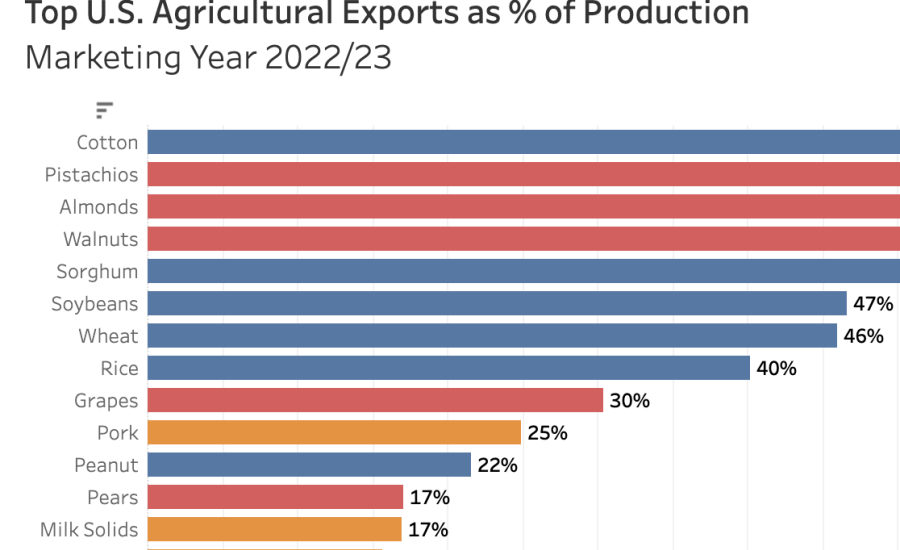Browse Data and Analysis
Filter
Search Data and Analysis
- 17 results found
- (-) Corn
- (-) May 2024
- (-) July 2017
- Clear all
U.S. agricultural exports are a critical source of farm income. The USDA Economic Research Service estimates that on average 23 percent of the output of nonmanufactured agricultural products were exported between 2013 and 2022.
On May 8, 2024, the Ministry of Agriculture and Rural Affairs (MARA) announced the issuance of new and renewed biosafety certificates for genetically engineered (GE) and gene-edited events.
Monthly report on crop acreage, yield and production in major countries worldwide. Sources include reporting from FAS’s worldwide offices, official statistics of foreign governments....
This monthly report includes data on U.S. and global trade, production, consumption and stocks, as well as analysis of developments affecting world trade in grains.
Exporters and importers continue to face much uncertainty due to the military regime’s foreign currency control policies and continuing conflict between the regime and ethnic armed forces. FAS Rangoon forecasts Burma’s MY 2024/25 rice exports to recover to 1.7 MMT amid high stocks and expected relaxation of export controls. MY 2024/25 corn exports and wheat imports will remain flat.
Wheat consumption in the Dominican Republic (DR) during Marketing Year (MY) 2017/2018 (July 2017/ June 2018) is forecast at 410,000 metric tons (MT), with imports remaining strong at 530,000 MT.
Zimbabwe’s corn crop for the 2017/18 MY is estimated at around 2.2 million tons, up more than 300 percent from the 2016/17 MY’s corn crop of 512,000 tons.
Reductions in government support to corn production encouraged Chinese farmers to plant more oilseeds, primarily soybeans.
The EU increased Ukraine’s annual import quotas for grains, which will allow higher volumes to enter duty free.
Bangladesh rice production in marketing year (MY) 2017/18 is forecast lower at 34.18 million metric tons (MMT).
Wheat production is forecast at 19.5 million metric tons (MMT) in marketing year (MY) 2017/18 because of high yields, especially in the Southeast and Thrace regions.
Post estimates Vietnam’s wheat imported volume for MY 2016/2017 at 5.5 million tons due mainly to the competitive price of feed wheat.

